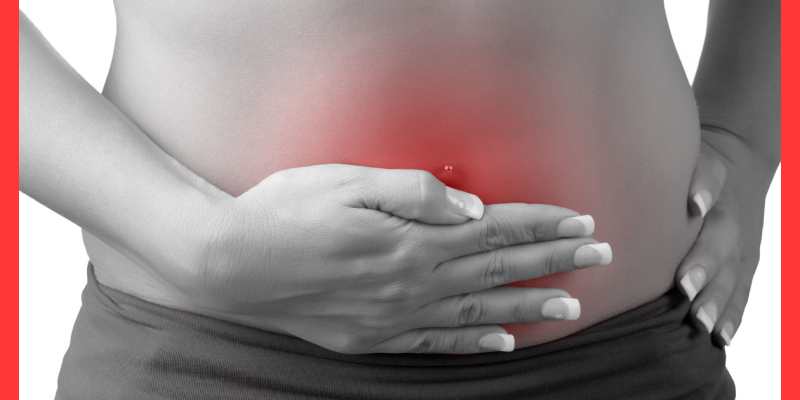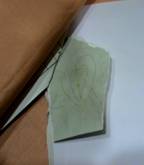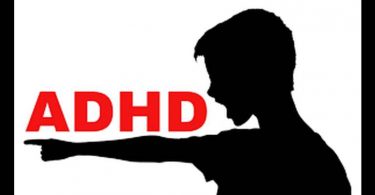I have now a case to relate of a large tumour, presumably of traumatic origin, in the cure of which two factors were helpful, viz.: traumatism and specificity of seat, or organopathy. Had I thought that my patient would recover I should have given one remedy at a time at any rate, but I did not think he would, but let me tell my story . On November 17th, 1887, I was requested to see a gentleman resident in London who was said to have a very large tumour in the abdomen, and no efforts to cure it had been spared, but they were quite unavailing. As six medical men — including the consulting surgeon and the consulting physician at Guy’s Hospital — had seen him and done their best to no purpose, I did not much care to go as a seventh medical man, merely to say ditto to the dictum of the other six. There seemed no chance of a cure, and an operation had been declared to be impossible, evidently because of the position and size of the tumour, and its probable adhesions to adjacent parts and organs.
The tumour presumably had its origin in a fall, then eight years ago, on the left side, which fractured the ribs; that is to say, the side had never been comfortable since and for many months this large mass had been growing larger and larger, at first incommoding loco motion and finally rendering it impossible. The patient was not only bedridden, but was not even able to turn over in bed, partly from weakness and partly because of the bulking mass. The patient being a long way past sixty years of age did not make the prospect any brighter. However, two days later, I did go to see the patient, and found a slender built man crouched up on his back and a little to the right. As he could not turn over himself, his wife and I had to aid him for the purposes of a proper physical examination, which disclosed a huge mass in his left side almost from the nipple to the pelvic rim.
There were brown patches on the skin of the abdomen, and inside of the left Poupart’s ligament were a number of lumps to be felt like little potatoes, presumably indurated and hypertrophied lymphatic glands. Add to this a quite cachectic look and rather severe adynamia, and the picture of hopeless malignant disease is complete.
I made close enquiry as to the opinions of my six doctorial predecessors in regard to the seat of origin of the tumour, and found that their two family advisers (the same firm) had always held it be connected with the left kidney. And when they failed to do it any good they called in a physician of repute who thought it could be cured, but when his efforts had also failed a good surgeon was called and he thought it quite incurable.
The most careful examination did not enable me to say whether it was connected with spleen or kidney or with both: the tumour practically occupied the left half of the abdomen, and not considering its history, was apparently connected with the spleen. Was there any chance of cure? There had been quite enough diagnosing from the standpoint of mere diagnostics, but I found the medicinal treatment had been confined to general tonic and quasi-absorbent measures, probably quinine, iron, mercury, and certainly iodine. I think any practical physician or surgeon will concede that a more hopeless case to cure by medicines is hardly to be found.
To begin with, how are we to choose medicines for such a case allopathically, homoeopathically, or anyhow? My own plan in difficult cases that seem so hopeless is to lay firmly hold of some point that may serve as a reasonable therapeutic starting point whence to carry out a cure. As a start there is here the traumatic element in the case, that is positive, and my own favorite and well-tried anti-traumatic is Bellis perennis; then the proving of this drug, communicated by myself, shows a decided affinity for the left hypochondrium, and finally Bellis has already in my hands cured a few tumours. This plan in the face of desperate odds, to lay hold of any help-promising remedy, is at least a stay for further reflection. Bellis perennis as an anti-traumatic and also Ceanothus Americanus as a splenic presented themselves to my mind, but which?
Candidly confessed I thought the good man doomed, but determined to try and save him, and not knowing which of my two remedies was the more likely to do something quickly^ (for the case was urgent — patient’s friends had already taken a last look at him as they thought,) I gave the two in alternation, and much did I subsequently regret this double shot, for the use of two medicines at one time teaches next to nothing : However Bellis and Ceanothus were given in five drop doses every four hours in alternation; this was on Nov. 12th, 1887, I find, and not the 17th which was the date of my second visit. The result of this medication was that after a while the patient could turn over in bed, then he could get in and out of bed by himself, and in 17 days from beginning the medicine, viz : on Nov. 29th, he came to my West End rooms in a cab with his wife. The effects of the medicines were a great diminution in the swelling (patient had lost much flesh and was still losing flesh) the passage of vast quantities of urine, (“It literally pours from me.”)
The skin of the palms of his hands is black but the lines strikingly white in contrast And the tumour itself was not only much smaller, but more defined. But patient’s weakness was terrible; evidently his coming to me was partly bravour and more an effort of will than real physical power. I therefore stopped the two remedies and gave Nux v. and Calc. hypophos as an indicated all-round pick-me-up.
Curability of Tumours. Dec. 6th. — He is much stronger, can walk up stairs, but his tumour is not quite so well. The skin of his hands, &c., is peeling off. Ur. sp. gr. 15, containing mucus and phosphates in great quantities. Repeat first prescription. He is still getting thinner but he is stronger, tongue very much coated; has to strain much at stool; eats well; he has walked here from the end of the street. Has a cold in the chest and cough, and this shake him and hurts his side very much Rx Bryonia alb, ix and Phos. in alt.
27 1 A. The cough is worse on going to bed and seems to be a spleen-cough. R. Sctlla marit, five drops in water three times a day. He did not need any subsequent treatment and he came to say goodbye on Jan. 24th, 1888. He had lost the tumour and the enlargement and induration of the lymphatic in the left side, and he was rapidly gaining flesh and strength. All things considered, it was clearly a tumour of the spleen, and I am disposed to think the lymphatics were irritated to enlargement either by the iodic and other irritant topics that had been applied, or else by the pressure of the tumour.
Still, the entire case remains a little puzzling, and others being in possession of its main features can judge as well as myself. At least it teaches — nil desperandum ! The cure was complete and permanent, which I know, as the patient turns up in my rooms every few months for his own and my satisfaction. Such a case is an oasis in the desert of a physician’s hard life. Should anyone say: But where is your homoeopathy in this case? My reply is: Proved again up to the hilt ! For, just as v. Gravogl’s case of enchondroma was conceived by him on a pathological theory, and was yet cured homoeopathically, so was this case of traumatic swelling of the abdomen cured purely homoeopathically, although not on the totality of the symptoms subjective and objective.
Now in regard to Bellis, if anyone doubt this, let him or her read the homoeopathic provings of this same daisy, and it will be seen that it produces swelling precisely of this congestive exudative kind — pathologically very like it, in fact; and if any further doubt’ still obtains, let them make a tea of the daisy — roots, leaves, flowers and all — and drink a wine-glassful three times a day, and then they will not merely believe, but know. There is nothing like the direct experiment on one’s own corpus vile. I have done it myself, and so need no professor of pharmacology to tell me.
Excerpted from: Tumours of the Breast and Their Treatment and Cure by Medicines – James Comptom Burnett MD







I am convinced to read the successful treatment the great homeopaths had provided as early as during 19th century although I am upset to know that some of them did not live long. May be it was too much pressure of continuous work load.
Wonderful!!!
PLEASE in future can you put the names of the remedies you prescribed at the END of the article as I (and I am sure many other people) enjoy trying to work out the correct remedy. For me this completely spoilt your article.